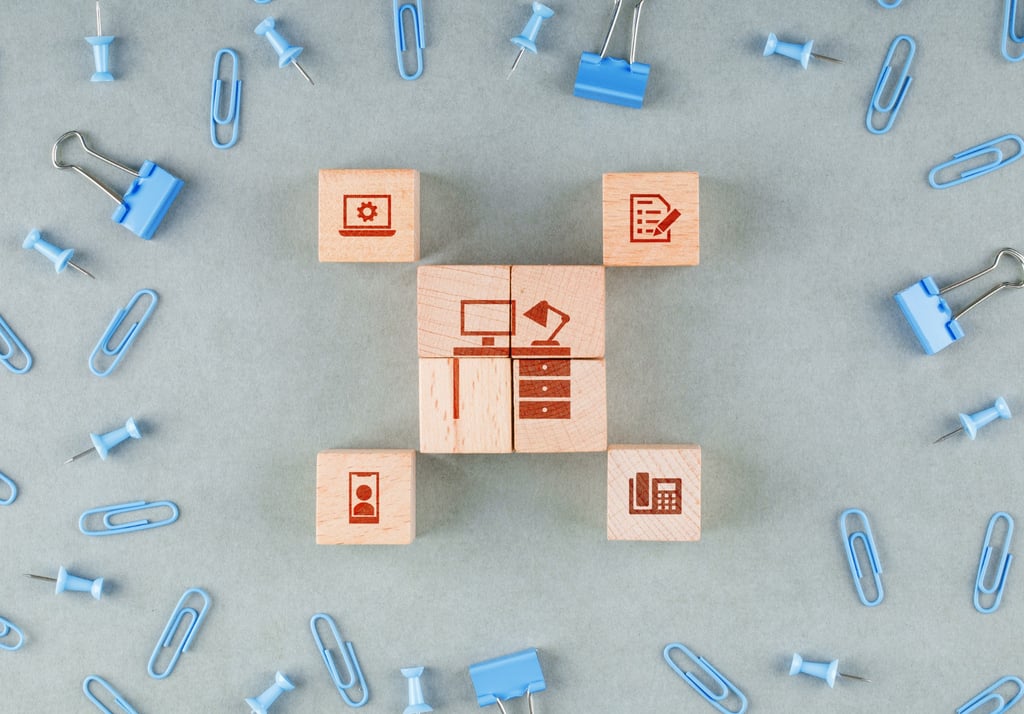Building Blocks of Procurement Success

Introduction to Procurement
In today’s business world, procurement plays a critical role in ensuring smooth operations, cost savings, and sustainable growth. Whether you’re a small start-up or a global corporation, understanding the building blocks of procurement success is vital for staying ahead in an increasingly competitive market.
Procurenment is the process of acquiring goods and services from external sources to meet organizational needs. It involves everything from identifying suppliers and negotiating contracts to managing inventory and mitigating risks. A well-executed procurement strategy can have far-reaching impacts on your bottom line and overall business performance.
In this blog post, we’ll delve into the key components that contribute to a successful procurement strategy. From nurturing valuable supplier relationships to implementing efficient processes supported by technology, we’ll explore how each element strengthens your organization’s ability to procure effectively.
Key Components of a Successful Procurement Strategy
To achieve success in procurement, organizations must develop and implement a well-defined strategy. A successful procurement strategy consists of several key components that work together to drive efficiency and effectiveness in the sourcing and acquisition process.
Having clear objectives is essential. It is crucial to define what the organization aims to achieve through its procurement activities. Whether it’s reducing costs, improving supplier relationships, or enhancing sustainability efforts, setting specific goals helps guide decision-making processes.
Next, effective market research plays a vital role in identifying potential suppliers and understanding industry trends. This allows organizations to make informed decisions when selecting vendors and negotiating contracts.
Collaboration with internal stakeholders is another critical component. Engaging various departments throughout the procurement process ensures that their requirements are considered, leading to more successful outcomes.
Moreover, risk management should be integrated into the procurement strategy. Assessing potential risks associated with suppliers’ financial stability or geopolitical factors helps mitigate disruptions that could impact operations.
Additionally, implementing robust supplier performance metrics enables ongoing evaluation of vendor performance against predefined criteria such as delivery timeframes or quality standards. This provides valuable insights for continuous improvement initiatives.
Leveraging technology solutions can significantly enhance procurement processes by automating tasks like purchase order generation and invoice processing while providing real-time data analytics for better decision making.
By incorporating these key components into their procurement strategies, organizations can optimize their sourcing practices and maximize value from supplier relationships while achieving long-term success in today’s competitive business landscape.
Understanding the Importance of Supplier Relationships
In the world of procurement, building strong relationships with suppliers is crucial for long-term success. A positive and collaborative relationship can lead to numerous benefits, such as improved quality, better pricing and timely delivery of goods or services.
When you establish a good rapport with your suppliers, they become more invested in your business’s success. They are likely to go above and beyond to meet your needs and provide excellent customer service. This level of commitment can help you gain a competitive edge in the marketplace.
Moreover, having trusted supplier relationships enables effective communication and collaboration. By understanding each other’s goals and challenges, you can work together to find innovative solutions that drive mutual growth.
Maintaining strong supplier relationships also mitigates risks. When unexpected disruptions occur or changes need to be made quickly, having open lines of communication allows for swift problem-solving and adaptation.
Furthermore, working closely with suppliers fosters transparency in the supply chain. You can gain insights into their practices, ensuring ethical sourcing and sustainability efforts align with your company’s values.
Prioritizing supplier relationships is an essential aspect of successful procurement strategies. It not only ensures operational efficiency but also creates opportunities for growth through innovation and collaboration.
Implementing Efficient Procurement Processes
Efficiency is the key to a successful procurement strategy. By implementing efficient procurement processes, organizations can streamline their operations and drive cost savings. Here are a few important steps to consider.
It’s crucial to have clear and well-defined procurement policies and procedures in place. This ensures that everyone involved in the process understands their roles and responsibilities, minimizing confusion or delays. By establishing standardized workflows and approval processes, you can eliminate bottlenecks and minimize unnecessary red tape.
Next, embracing technology is essential for improving efficiency in procurement. Implementing an e-procurement system allows for automated purchase orders, electronic catalogues, contract management tools, and streamlined supplier communication. This not only speeds up the purchasing process but also reduces the risk of errors or discrepancies.
Furthermore, effective data management plays a vital role in optimizing efficiency. By leveraging analytics tools and reporting systems, organizations can gain insights into spending patterns, supplier performance metrics, and potential areas for improvement. This data-driven approach enables better decision-making when it comes to selecting suppliers or negotiating contracts.
Collaboration between different departments within an organization is another critical aspect of efficient procurement processes. By involving stakeholders from finance, legal teams,and other relevant departments early on in the process,you can align priorities more effectivelyand avoid last-minute issues that could cause delays or hinder progress.
Finally, don’t underestimate the importance of ongoing evaluation and continuous improvement. Instituting regular audits of your procurement practices can help identify any inefficiencies or areas where additional training may be required. By regularly reviewing your processes and making necessary adjustments, you’ll be able to stay agile in today’s ever-changing business landscape.
The Role of Technology in Modern Procurement
In today’s fast-paced business world, technology plays a crucial role in driving efficiency and effectiveness in procurement processes. From streamlining operations to improving transparency, technology has revolutionized the way organizations manage their procurement activities.
One key aspect where technology has made a significant impact is automation. Manual tasks such as purchase order generation, supplier selection, and invoice processing can now be automated using advanced software solutions. This not only reduces human error but also saves time and resources.
Another important area where technology has transformed procurement is data analytics. With the help of powerful analytics tools, organizations can analyze vast amounts of data to gain valuable insights into their supply chain performance. This enables them to identify areas for improvement, optimize sourcing strategies, and make informed decisions based on real-time information.
Furthermore, cloud-based platforms have become increasingly popular in modern procurement practices. These platforms provide a centralized hub for managing supplier relationships, contract management, and collaboration among internal stakeholders. Cloud-based solutions offer flexibility and accessibility while ensuring data security and backup.
Additionally, e-procurement systems have simplified the purchasing process by allowing employees to browse catalogues online, submit requisitions electronically, and track orders seamlessly. This not only improves user experience but also enhances compliance with organizational policies and procedures.
Moreover, emerging technologies like artificial intelligence (AI) are reshaping the future of procurement by offering predictive capabilities that enable organizations to forecast demand accurately or detect potential risks before they occur.
Adopting Sustainable and Ethical Practices
In today’s global business landscape, sustainability and ethical practices have become crucial considerations for companies in every industry. When it comes to procurement, integrating these values into your processes can lead to both environmental and social benefits.
One key aspect of adopting sustainable practices in procurement is sourcing materials and products from environmentally responsible suppliers. This includes evaluating their production methods, carbon footprint, waste management strategies, and commitment to renewable resources. By choosing partners who align with your sustainability goals, you can minimize the negative impact on the environment.
Ethics also play a significant role in procurement. It involves ensuring fair treatment of workers throughout the supply chain, from the extraction of raw materials to manufacturing facilities. Ethical practices encompass issues like child labor prevention, fair wages, safe working conditions, and diversity and inclusion initiatives.
Implementing sustainable and ethical practices requires open communication with suppliers about your expectations. Regular audits can help ensure compliance with established guidelines while encouraging continuous improvement in areas such as energy efficiency or waste reduction.
By prioritizing sustainability and ethics in procurement decisions, businesses not only contribute positively to society but also enhance their brand reputation among customers who value responsible consumption choices.
Remember that adopting sustainable and ethical practices is an ongoing process that requires constant evaluation and adaptation to meet changing standards and societal expectations. With each step taken towards a more responsible approach to procurement, companies move closer toward achieving long-term success while making a positive impact on people planet alike.
Conclusion: Achieving Long-Term Success in Procurement
In today’s competitive business landscape, a well-executed procurement strategy is essential for organizations to thrive. By understanding the key components of procurement success and implementing efficient processes, businesses can not only optimize their costs but also drive innovation and maintain a competitive edge.
One of the fundamental building blocks of successful procurement is establishing strong supplier relationships. By collaborating closely with suppliers, organizations can ensure reliable and high-quality inputs while fostering mutually beneficial partnerships. Regular communication, transparency, and trust are crucial in developing these relationships that go beyond transactional interactions.
Efficiency is another critical factor in achieving procurement success. Streamlining processes such as vendor selection, purchase order management, and inventory control can significantly reduce lead times, minimize errors, and enhance overall productivity. Leveraging technology solutions like e-procurement systems or digital marketplaces can automate manual tasks and provide real-time visibility into the entire supply chain.
Technology plays an increasingly vital role in modern procurement practices. Advanced analytics tools enable organizations to gain valuable insights from vast amounts of data related to supplier performance, demand patterns, market trends, and more. This data-driven approach empowers businesses to make informed decisions regarding sourcing strategies or identifying potential risks within their supply chains.

